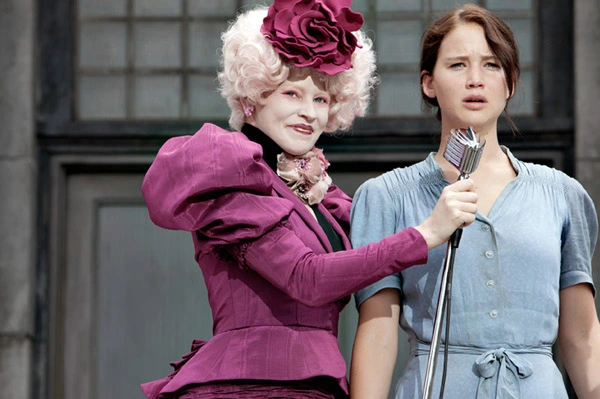Picture this: The screen is dark. You see a killer lurking behind their soon-to-be victim. Everything is silent except for a subtle thrumming sound that is progressively getting louder in the background. You’re getting antsy because the protagonist hasn't sensed the danger that awaits. Shiver is running down your spine. You can feel your heartbeat getting faster and faster and then BAM! The main character finally saw their murderer, they started chasing each other, the victim made increasingly questionable choices, you yelled out of frustration from your seat, and eventually, the victim met their bitter end while the killer ran free.
Familiar with this experience? This might be what you encounter when you’re watching Michael Myers and Laurie Strode in Halloween, Ghostface and Casey Becker from Scream, and so on.
Horror movies have been around for centuries, dating back to 1898 when George Mellies created what was believed to be the first horror movie ever according to the New York Film Academy (NYFA). After the first horror movie, sometime between 1900 and 1920, an influx of supernatural-themed films continued to appear followed by “The Golden Era of Horror” in the 1920-1930s, the classic Alfred Hitchcock’s Psycho in the 1960, all the way to modern day horror such as the Scream franchise, The Conjuring Universe, Get Out, Hereditary, among others.
Enter the scene: elevated horror.
Dark and contemplative, elevated horror is essentially a subgenre that relies on atmosphere building, psychological character development, cinematic style and philosophical themes for effect - rather than straightforward jumpscares. A few names keep popping up when we’re talking about elevated horror such as Ari Aster with his cult-themed Hereditary and Midsommar; Jordan Peele with the racially and socially-conscious Get Out and Us; or Robert Eggers with the dark The Lighthouse and The Witch.
In the psychological thriller, “Get Out” (2017), writer/director Jordan Peele explores the racial dynamic between white liberals and black people. The movie does this by showing the fascination of the liberal, white, Armitage family with Chris (played by Daniel Kaluuya), the black protagonist of the movie before showing the twisted motive behind their obsession where they trap these black people then strip them down of their soul and cognitive ability by doing a brain transplant where the elderly white people’s brains are put into the black people’s body so they can live their lives in a younger and healthier body for longer.
By doing so, the movie portrays the romanticization of blackness as an object to be utilized by white people instead of a cultural identity to be respected. It also highlights the “fake woke”-ness that we often witness today, the ignorance and microaggressions, and the narrow characterization of black people and culture. The terror in this movie doesn’t come in the form of monsters or ghosts, but something realer and closer, human.
This brings us to the next question, why do people enjoy “elevated horror”? People might like it because it’s more “real”. Many of these movies deal with family relationships, racial, social, and political issues, or bring a psychological theme, thus deemed as more realistic than other “generic” horror movies. At some point, people got bored of the gore fest that late 1990s and early 2000s horror movies bring. These movies were seen as lazy, prioritizing blood and gore over meaningful plot, even described as “cheap”, “lowbrow”, or “cash-grab” movies. Ultimately, there’s this need for people to feel superior over others because they like “darker” and “smarter” horror movies with a more “intelligent” storyline and buildups.
Another example of a movie from this genre is Midsommar (2019) directed by Ari Aster which follows a group of college students on their journey to Sweden for the pagan festival. Dani (played by Florence Pugh) is still grieving the loss of her sister and parents when she went with her emotionally-absent boyfriend, Christian (played by Jack Reynor) and his friends. The group was soon exposed to strange rituals of the people, including elderly jumping off a cliff to their deaths called Ättestupa that was done when old people can no longer support themselves. This moment forced Dani to confront her grief and fear while also exposing her to other people’s emotional journey when dealing with deaths. It also serves as a turning point in the movie where previously the group was happy to be able to experience this new culture, then feeling anxious because of the bizarre lifestyle and rituals that the locals have, to downright terror and fear that they’re going down a bleak road.
The movie shows horror not through the dark screen, it’s actually quite the opposite because there is no night time in the village and the sun is shining all day long. It instills audience with a dark underlying fear and terror as well as forces us to experience the trauma and psychological roller coaster with Dani.
The term eventually sparked a debate that it’s unnecessary and elitist, especially since a lot of movies that are categorized as elevated horror can be called “psychological horror”, a term that has been around for a long time so many argued that there’s really no need to create a new term to essentially separate those who prefer a “more sophisticated” film over a typical slasher.
So, is elevated horror the new horror? We certainly can’t deny its rapidly growing popularity and it’s also a great outlet to talk about important issues in a safe space. However, I think it’s safe to say that “tacky” and regular horror movies are not going anywhere because there’s an element of fun and nostalgia that people love from them. That said, regular and elevated horror movies should be able to find their own place in the scene.
—
Sources:












